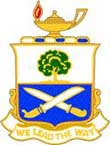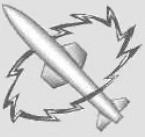Jim D Burns
Posts: 4013
Joined: 2/25/2002
From: Salida, CA.
Status: offline

|
I found a great PDF file (164 pages) that gave a better idea of a liberty’s lift abilities. It should be noted that it states there was a specifically designed tank and aircraft version of the ship designed to carry the larger individual cargo items. The main difference was the tonnage each boom could lift and the ships went from 5 cargo hatches to 4 so larger individual items could get below decks. It’s on page 29 and lists all 44 of these modified ships by name.
Here’s a link to the full PDF:
http://ww2ships.com/acrobat/us-os-001-f-r00.pdf
Here’s the specs breakdown which mentions the difference between ‘grain’ volume and ‘bale’ volume. The term ‘stiffeners’ seems to imply there was a scaffolding style framing structure that was used to allow large cargo items to be stacked.
Liberty specs
Dimensions
Displacement (Max.) 14,245 tonnes
Length (OA) 441 ft 6 in (129.81 m)
Length (pp) 417 ft 8.75 in (122.82 m)
Length (WL) 427 ft (125.52 m)
Beam 57 ft (16.76 m)
Draft [Note 1] 27 ft 8 7/8 in (8.16 m)
Block Coefficient 0.745
Propulsion 2500 hp
Speed 11 kts
Cargo Capacity
Deadweight [Note 2] 10,856 tonnes
Gross tonnes 7,176 tonnes
Cargo volume [Note 3] 562,608 ft3 grain (14,297 m3)
499,573 ft3 bale (12,695 m3)
Miscellaneous
Armament [Note 4] Varies
Compliment 81
Note 1: Draft quoted is maximum normal seagoing draft in peace conditions, and corresponds to the maximum
displacement. This draft may be exceeded in coastal or inland waterways, or by overloading during wartime.
Unladen ships will have a significantly lower draft.
Note 2: As well as cargo weight, deadweight also includes the weight of stores, fuel and other consumables,
although on a cargo ship the 'deadweight' is dominated by cargo weight.
Note 3: Cargo volume is quoted in various measures depending on the type of vessel. The 'grain' measurement is for
general dry cargo vessels, and indicates the total volume of the holds, excluding any structural items or fittings (grain
fills in all corners and around structural members). The 'bale' measurement is again for general dry cargo vessels,
however it measures volume up to the stiffeners on the inside of the hull, with space between stiffeners being lost
(bales of cargo don't flow around beams). The 'barrel' is quoted for oil carriers, although in the modern world oil is
now normally measured by the ton.
Note 4: The armament provided varied considerably, and could include four inch and three inch guns, 20mm and
37mm cannon, as well as 0.3 and 0.5 inch machineguns. The largest gun (generally a four inch) would typically be
fitted at the stern, and would be flanked by two smaller guns (such as two single 20 mm cannon). There would
usually be four gun positions on the superstructure, and these could be 20mm cannons, machineguns, or a mixture of
both. The forward mast would be provided with two guns, usually 20mm cannon or 0.5 inch machineguns. On the
bow would often be a single three inch gun. Many variants on this typical arrangement existed, with additional guns
being fitted in other areas (such as two or four guns added adjacent to the second mast), or the arrangements changed
from those described above (such as replacing the single bow gun with two 37mm cannon).
Jim
< Message edited by Jim D Burns -- 12/25/2007 8:29:37 PM >
_____________________________
|
 Printable Version
Printable Version





















 New Messages
New Messages No New Messages
No New Messages Hot Topic w/ New Messages
Hot Topic w/ New Messages Hot Topic w/o New Messages
Hot Topic w/o New Messages Locked w/ New Messages
Locked w/ New Messages Locked w/o New Messages
Locked w/o New Messages Post New Thread
Post New Thread